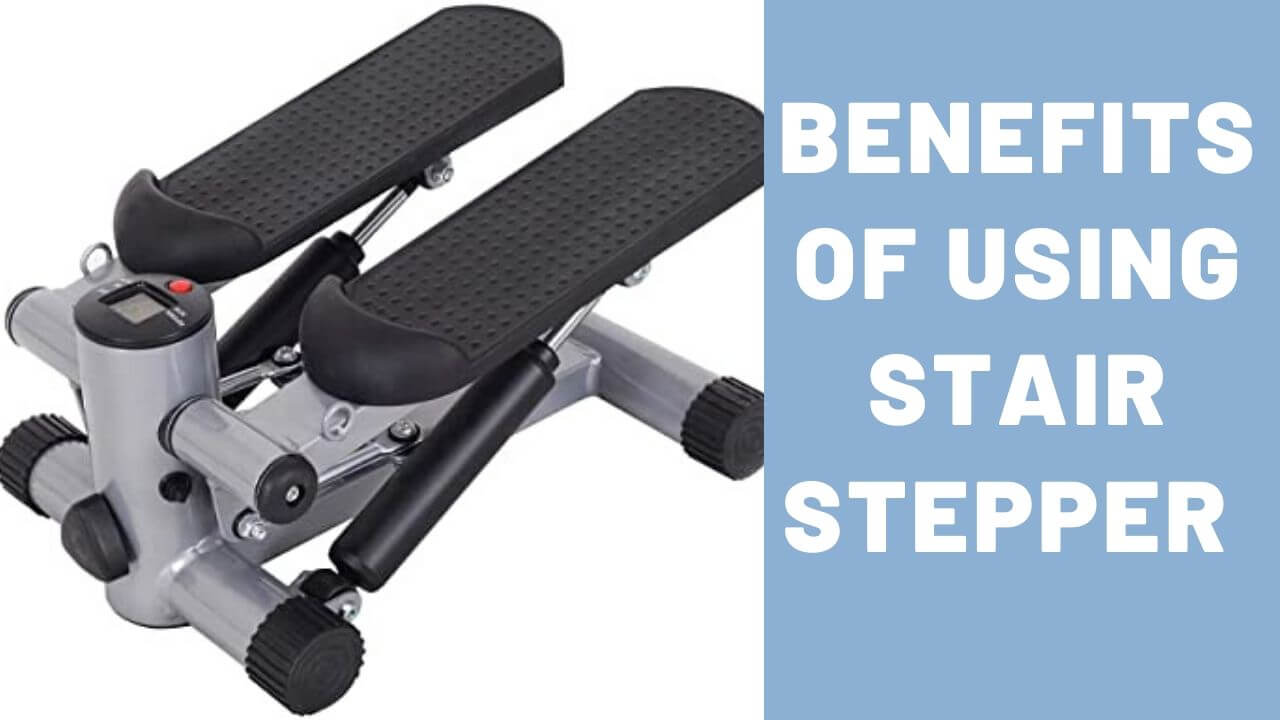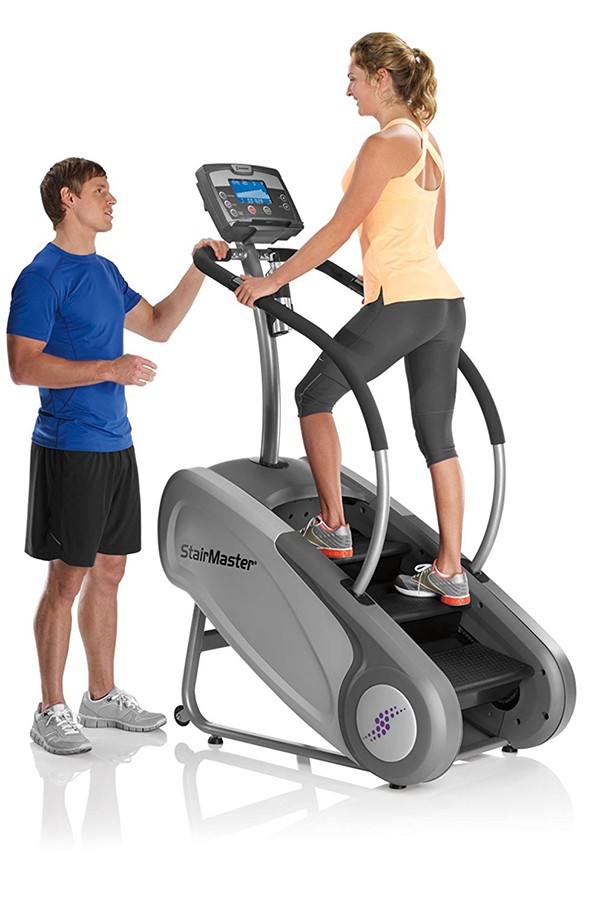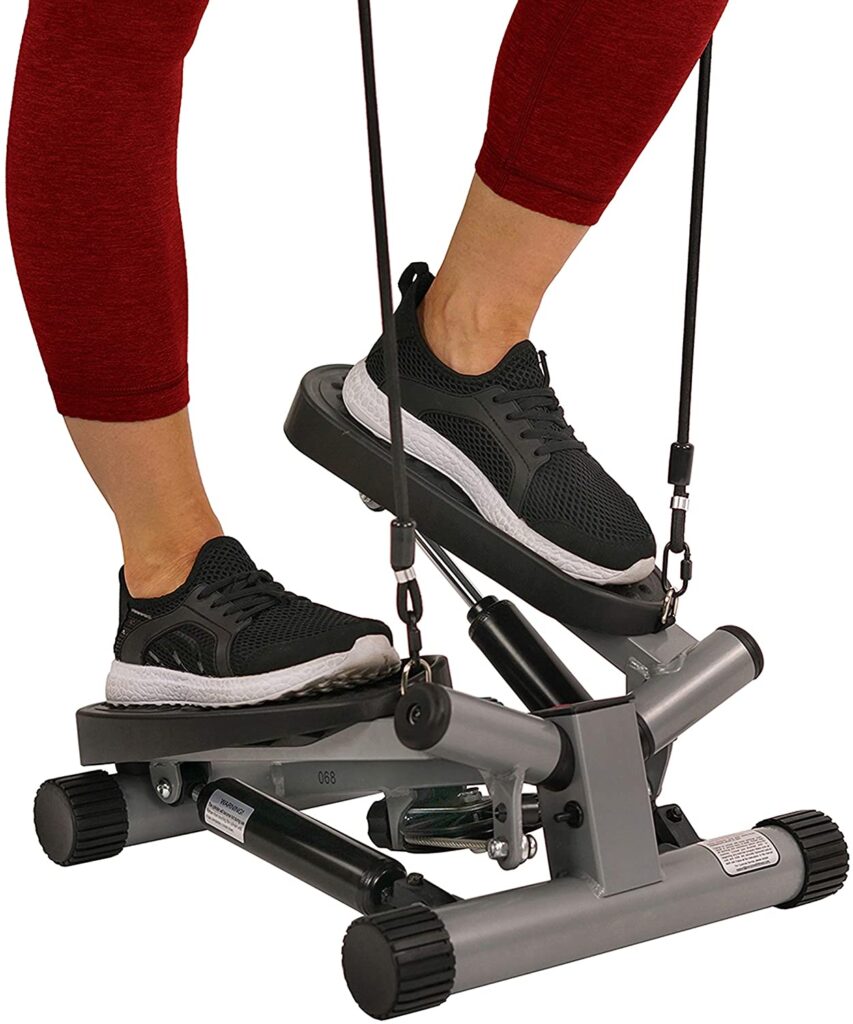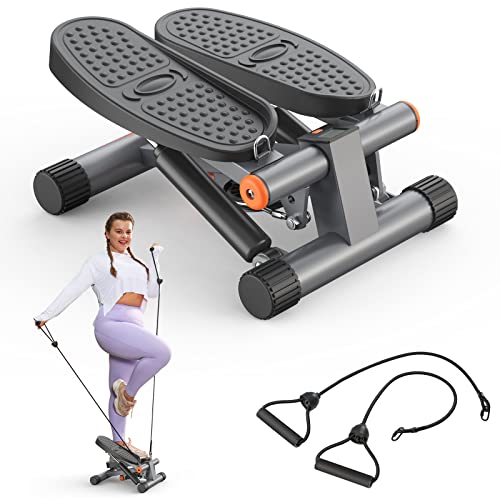What is a Stair Stepper and Its Applications
A stair stepper is a versatile piece of fitness equipment designed to simulate the motion of climbing stairs. It is an excellent option for low-impact cardiovascular exercise, making it suitable for individuals of various fitness levels and ages. Stair steppers are available in two primary designs: the traditional stair stepper, which features separate pedals, and the more compact escalator-style stepper, which has a continuous belt. Both types provide an efficient workout targeting major lower body muscle groups, including the glutes, quadriceps, hamstrings, and calves.
The stair stepper’s low-impact nature reduces the stress on joints, minimizing the risk of injury compared to high-impact exercises like running. This feature makes stair steppers an ideal choice for people recovering from injuries, older adults, or those with joint issues. Moreover, stair steppers are compact and portable, making them a convenient option for home use or for incorporation into a gym routine.
In summary, a stair stepper is a valuable addition to any fitness regimen, offering a wide range of benefits for cardiovascular health, weight loss, and muscle toning. Its low-impact nature and versatile designs make it an accessible and effective exercise tool for users with diverse fitness goals and physical conditions.
How a Stair Stepper Helps Improve Cardiovascular Health
Stair steppers are an excellent tool for enhancing cardiovascular health, providing a low-impact workout that targets the heart and circulatory system. By engaging in regular stair stepping exercises, users can experience a range of cardiovascular benefits, including improved heart function, increased stamina, and a reduced risk of heart disease.
The continuous stepping motion of stair steppers increases heart rate and promotes blood flow, strengthening the heart muscle and improving overall cardiovascular efficiency. As a result, users may notice increased stamina and endurance during both exercise and daily activities. Furthermore, regular stair stepping workouts have been shown to lower resting heart rate and blood pressure, reducing the risk of heart disease and stroke.
Stair steppers also provide an effective aerobic workout, which contributes to the body’s ability to utilize oxygen efficiently. Aerobic exercise has been linked to numerous health benefits, such as improved mood, better sleep quality, and enhanced immune function. By incorporating stair steppers into a well-rounded fitness routine, users can experience these advantages and significantly improve their cardiovascular health.
In summary, stair steppers are an excellent option for those looking to enhance their cardiovascular health. By offering a low-impact, efficient workout, stair steppers can help improve heart function, increase stamina, and reduce the risk of heart disease. Integrating stair steppers into a balanced exercise regimen, along with proper safety precautions and professional guidance, can lead to long-term cardiovascular benefits and overall well-being.
The Impact of Stair Steppers on Weight Loss and Muscle Toning
Stair steppers are an effective tool for promoting weight loss and muscle toning, primarily targeting major lower body muscle groups. By engaging these muscles, users can expect to see improvements in strength, muscle definition, and overall physical appearance.
Stair steppers offer a calorie-burning workout, with the potential to burn between 300 to 500 calories per hour, depending on factors such as intensity, resistance, and user weight. Incorporating stair stepping exercises into a regular fitness routine can contribute to overall weight loss goals and help maintain a healthy body weight.
In addition to calorie burn, stair steppers target lower body muscle groups, including the glutes, quadriceps, hamstrings, and calves. The continuous stepping motion engages these muscles, leading to increased strength and muscle tone. Furthermore, stair steppers with adjustable resistance levels allow users to challenge themselves and further stimulate muscle growth and development.
To maximize weight loss and muscle toning benefits, consider incorporating high-intensity interval training (HIIT) into your stair stepping workouts. HIIT involves alternating between short bursts of intense activity and periods of lower-intensity exercise or rest. This approach can significantly increase calorie burn and promote muscle development, making it an efficient and time-effective workout strategy.
In summary, stair steppers provide a valuable contribution to weight loss and muscle toning efforts. By offering a calorie-burning, lower body-focused workout, stair steppers can help users achieve their fitness goals and maintain a healthy body weight. Incorporating stair steppers into a well-rounded exercise regimen, along with proper safety precautions, professional guidance, and varied workout strategies, can lead to long-term benefits and overall well-being.
Stair Steppers vs. Other Cardio Equipment: Making an Informed Choice
When considering what is a stair stepper good for, it is essential to compare stair steppers with other popular cardio machines to make an informed choice. Each piece of equipment offers unique advantages and disadvantages, and understanding these can help users select the best option for their fitness goals and preferences.
Treadmills are a common choice for cardiovascular exercise, providing a high-impact workout that primarily targets the legs and glutes. While treadmills can burn a significant number of calories, their high-impact nature may increase the risk of injury, particularly for those with joint issues.
Ellipticals offer a low-impact, total-body workout, engaging both the upper and lower body. This versatility can lead to a more balanced workout, but the continuous motion may not provide the same intensity as stair steppers or treadmills.
Stationary bikes focus on lower body exercise, primarily targeting the quadriceps and glutes. Bikes offer a low-impact workout, making them suitable for users with joint issues. However, they may not engage the hamstrings and calves as effectively as stair steppers.
Stair steppers provide a low-impact, lower body-focused workout, targeting the glutes, quadriceps, hamstrings, and calves. The adjustable resistance levels allow users to customize their workout intensity, and the stepping motion can lead to improved balance and stability.
In summary, stair steppers offer a unique set of advantages compared to other cardio machines. By providing a low-impact, lower body-focused workout with adjustable resistance levels, stair steppers can contribute to improved cardiovascular health, weight loss, and muscle toning. Users should consider their individual fitness goals, preferences, and physical conditions when selecting the most suitable cardio equipment for their needs.
Selecting the Right Stair Stepper for Your Fitness Goals
When determining what is a stair stepper good for, selecting the right model is crucial for achieving your fitness goals. Consider the following factors to ensure a suitable stair stepper purchase:
- Resistance Levels: Adjustable resistance levels allow users to customize their workout intensity, making it essential to choose a stair stepper with sufficient resistance range. A wider range enables users to progress and challenge themselves over time.
- Adjustability: Look for stair steppers with adjustable pedal height, step length, and step rate. These features enable users to target different muscle groups and vary their workouts, reducing the risk of boredom and plateaus.
- Additional Features: Some stair steppers come with built-in workout programs, heart rate monitors, and LCD screens displaying calories burned, steps taken, and time elapsed. These features can enhance the user experience and provide valuable workout data.
- Size and Portability: Consider the space available in your home or gym when selecting a stair stepper. Compact and portable models are ideal for smaller spaces, while larger models may offer more stability and features.
- Price: Stair steppers vary in price, with basic models starting around $100 and high-end models costing over $2,000. Determine your budget and prioritize features accordingly.
Popular stair stepper models include the Bowflex Max Trainer and the StairMaster 8 Series Gauntlet. The Bowflex Max Trainer combines the benefits of a stair stepper and an elliptical, offering a low-impact, total-body workout. The StairMaster 8 Series Gauntlet is a commercial-grade stair stepper with a heavy-duty construction, adjustable pedal angle, and various workout programs.
In conclusion, choosing the right stair stepper requires considering resistance levels, adjustability, additional features, size, and price. By selecting a model that aligns with your fitness goals and preferences, you can maximize the benefits of stair stepping exercises and achieve long-term success.
Incorporating Stair Steppers into Your Fitness Routine
Stair steppers offer numerous benefits, making them a valuable addition to any fitness regimen. To maximize their potential, consider the following tips on integrating stair steppers into your workout plan:
- Frequency: Aim to use the stair stepper 2-3 times per week, allowing adequate recovery time between sessions. Incorporating stair stepping exercises into a split routine, where you focus on different muscle groups on different days, can help ensure proper recovery and prevent overtraining.
- Duration: Start with shorter stair stepping sessions, gradually increasing the duration as your fitness level improves. Aim for 15-30 minutes per session, focusing on maintaining proper form and technique throughout the workout.
- Intensity: Start with a lower intensity, focusing on mastering the movement and building endurance. As your fitness level improves, increase the intensity by adjusting the resistance levels, step rate, or incorporating high-intensity interval training (HIIT) workouts.
- Combining Stair Stepping with Other Exercises: Pair stair stepping exercises with strength training and flexibility workouts to create a well-rounded fitness routine. For example, perform stair stepping exercises on days dedicated to lower body strength training, and incorporate yoga or stretching routines on other days to improve flexibility and mobility.
By following these guidelines, you can effectively incorporate stair steppers into your fitness routine, maximizing their benefits for cardiovascular health, weight loss, and muscle toning. Remember to consult a fitness professional for personalized advice and adjust your workout plan as needed to achieve your fitness goals.
Maximizing Safety and Comfort During Stair Stepper Workouts
When using a stair stepper, prioritizing safety and comfort is crucial for preventing injuries and ensuring an enjoyable workout experience. Consider the following guidelines to optimize your stair stepping sessions:
- Correct Posture: Maintain an upright posture throughout your workout, keeping your shoulders back, chest lifted, and core engaged. Avoid hunching over or leaning forward, as this can strain your back and neck.
- Adjust Resistance Levels: Start with a lower resistance level and gradually increase it as your fitness improves. Using too much resistance too soon can lead to improper form and increase the risk of injury.
- Monitor Heart Rate: Keep track of your heart rate during stair stepping exercises to ensure you’re working within your target heart rate zone. Aim for 50-70% of your maximum heart rate during moderate-intensity workouts or 70-85% for high-intensity sessions.
- Wear Proper Footwear: Choose shoes with good arch support and cushioning to absorb impact and protect your joints. Avoid wearing worn-out or ill-fitting shoes, as they can compromise your stability and increase the risk of injury.
- Consult a Fitness Professional: Seek advice from a fitness professional to ensure you’re using proper form and technique. They can also help you create a personalized workout plan tailored to your fitness goals and needs.
By following these safety precautions and focusing on maintaining correct form, you can maximize the benefits of stair steppers while minimizing the risk of injury. Remember to listen to your body, adjust your workout plan as needed, and prioritize your overall health and well-being.
Overcoming Challenges and Staying Motivated on the Stair Stepper
Even with the numerous benefits of stair steppers, users may face challenges such as boredom and plateaus. To maintain motivation and enthusiasm, consider the following strategies:
- Set Realistic Goals: Establish specific, measurable, achievable, relevant, and time-bound (SMART) goals to guide your stair stepping journey. Regularly reassess your progress and adjust your goals as needed to ensure continued growth and development.
- Mix Up Your Workouts: Incorporate variety into your stair stepping routine by alternating between different resistance levels, step rates, and workout durations. You can also try high-intensity interval training (HIIT) workouts, which involve alternating between short bursts of intense activity and recovery periods.
- Track Your Progress: Keep a workout log to monitor your improvements, including distance, time, and calories burned. Seeing your progress in writing can serve as motivation and help you stay focused on your fitness goals.
- Listen to Music or Podcasts: Create a motivating playlist or listen to engaging podcasts to help pass the time and make your stair stepping sessions more enjoyable.
- Exercise with a Friend: Find a workout buddy to join you on the stair stepper. Exercising with a friend can make the experience more enjoyable and help hold you accountable to your fitness routine.
By implementing these strategies, you can overcome common challenges faced during stair stepper workouts and maintain motivation and enthusiasm for your fitness journey. Remember to stay patient, celebrate your achievements, and enjoy the process of improving your overall health and well-being.









